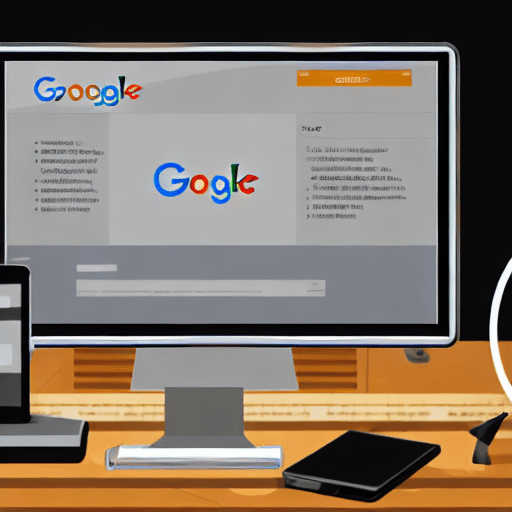

In the fiercely competitive world of digital advertising, simply running a Google Ads campaign isn’t enough. You need to ensure that every click translates into a tangible result – a conversion. A significant portion of that success hinges on the effectiveness of your landing pages. This article delves deep into the powerful synergy between retargeting strategies and optimized Google Ads landing pages, revealing how to transform your campaigns from cost centers into revenue generators. We’ll explore audience segmentation, design principles, content strategies, and the crucial role of A/B testing. Let’s break down why this combination is so vital and how you can implement it effectively.
Many businesses launch Google Ads campaigns without a dedicated landing page strategy, or worse, use generic pages that don’t align with the ad copy. This is a critical mistake. Users click on an ad, expecting a relevant experience. If the landing page doesn’t deliver on that promise, they’ll quickly bounce – leaving you with wasted ad spend and a poor user experience. Imagine someone searches for “best running shoes” and clicks on an ad for “XYZ Running Shoes.” If the landing page is a generic product catalog with thousands of shoes, the user will likely get frustrated and leave. The ad promised a specific solution, and the landing page failed to provide it. This is a classic example of a lost conversion opportunity.
Retargeting, also known as remarketing, is a powerful Google Ads strategy that allows you to show ads to users who have previously interacted with your website. This interaction can include visiting specific pages, adding items to their cart, or even just browsing your site. It’s based on the principle that users who have already shown interest in your product or service are more likely to convert than a completely cold audience. Google Ads allows you to create custom audiences based on various behaviors, giving you granular control over your retargeting efforts. For example, you can retarget users who viewed a specific product page, or those who abandoned their shopping cart. The key is to tailor your messaging to their previous behavior, reinforcing their interest and guiding them towards a conversion.
Effective retargeting isn’t about showing the same ad to everyone. It’s about creating highly targeted segments based on user behavior. Here are some key segmentation strategies:
The more granular your segmentation, the more relevant your retargeting ads will be, leading to higher click-through rates and conversion rates.
Once you’ve identified your retargeting segments, you need to ensure your landing pages are perfectly aligned with their expectations. Here’s a breakdown of key optimization elements:
The most crucial element is relevance. Your landing page’s messaging must directly address the user’s intent as reflected in the ad they clicked on. If they saw an ad for “affordable running shoes,” your landing page should prominently feature affordable running shoes. Avoid generic messaging; focus on the specific product or offer they were interested in.
A cluttered, confusing, or slow-loading landing page will immediately turn users away. Prioritize a clean, intuitive design with a clear call to action. Ensure your landing page is mobile-friendly – a significant portion of your traffic will likely come from mobile devices. Optimize page load speed – slow loading times are a major conversion killer. Use high-quality images and videos to showcase your product or service. Maintain a consistent brand identity across your landing page and your Google Ads campaigns.
Your CTA should be prominent, concise, and compelling. Use action-oriented language – “Buy Now,” “Get a Quote,” “Download Now,” “Start Free Trial.” Make it easy for users to take the desired action. Consider using multiple CTAs to cater to different user behaviors.
Build trust and credibility on your landing page. Include customer testimonials, reviews, security badges, and guarantees. Display your contact information prominently. A lack of trust can significantly deter conversions.
A/B testing (also known as split testing) is the process of comparing two versions of your landing page to see which performs better. You can test different headlines, images, CTAs, layouts, and even entire page designs. Google Optimize is a free tool that integrates seamlessly with Google Ads and allows you to easily conduct A/B tests. Start with small changes and track your results carefully. Continuously iterate and optimize your landing pages based on the data you collect.
The real power comes when you integrate retargeting with optimized landing pages. Here’s how:
Track key metrics to assess the effectiveness of your retargeting and landing page optimization efforts:
By continuously monitoring these metrics and making data-driven adjustments, you can significantly improve the performance of your retargeting campaigns and drive more conversions.
Remember, retargeting and landing page optimization are not one-time efforts. They’re ongoing processes that require continuous monitoring, testing, and refinement.
Tags: Google Ads, retargeting, landing page optimization, conversion rate, A/B testing, audience segmentation, user experience, website design, digital marketing
[…] Advertising: Businesses are increasingly adopting a multi-channel approach to advertising, integrating Google Ads with other platforms like Facebook, Instagram, and LinkedIn. The Editor will likely become even […]